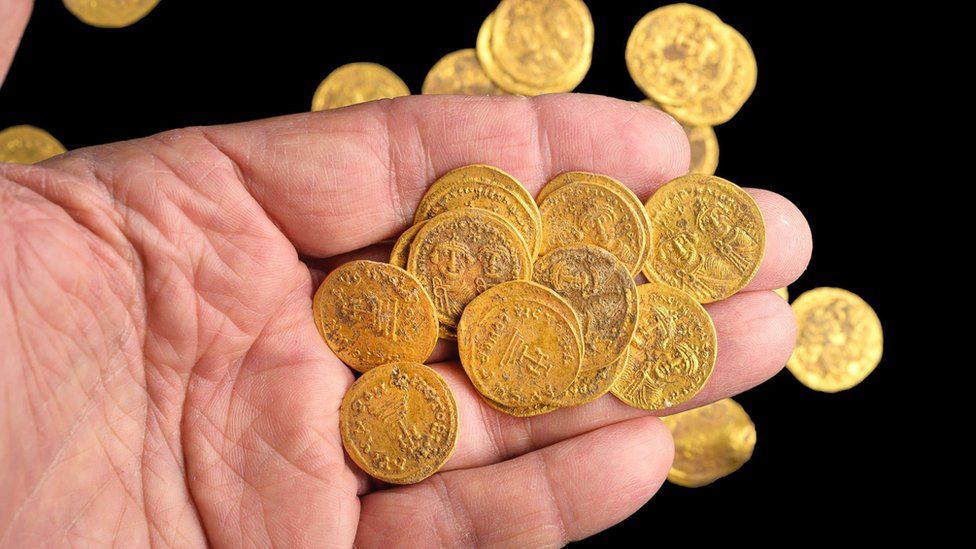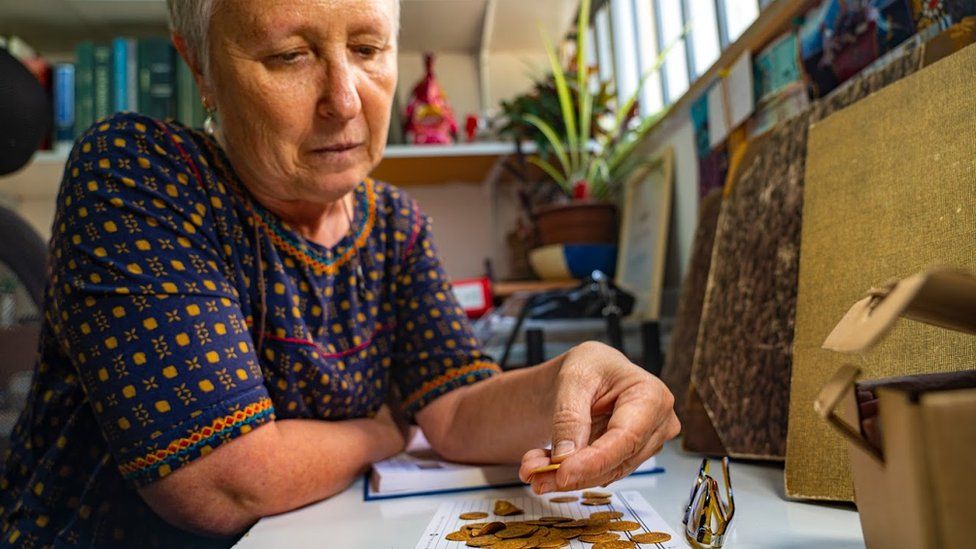From BBC New
Edited by Amal Udawatta,
Archaeologists in Israel say 44 pure gold coins dating to the 7th Century have been found hidden in a wall at a nature reserve.
Weighing about 170g, the hoard found at the Hermon Stream (Banias) site was hidden during the Muslim conquest of the area in 635, experts estimated.
They said the coins shed light on the end of the Byzantine rule in the area.
The Byzantine Empire was the eastern half of the Roman Empire, which survived for more than 1,000 years.
"We can imagine the owner concealing his fortune in the threat of war, hoping to return one day to retrieve his property," said Yoav Lerer, director of the excavation.
"In retrospect, we know that he was less fortunate."
Apart from the gold coins, the excavation - in a residential quarter of the ancient city - also uncovered the remains of buildings, water channels and pipes, bronze coins and much more, Israeli authorities said.
Dr Gabriela Bijovsky, a numismatic (currency) expert at the Israel Antiquities Authority, said some of the coins were of Emperor Phocas (602-610), but most were of his successor Heraclius.
Banias has a particular place in Christian tradition, being the site where Jesus is said to have told the apostle Peter, "on this rock, I will build my church".


Comments
Post a Comment